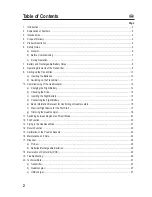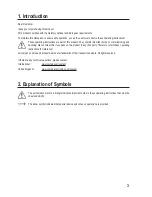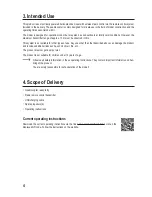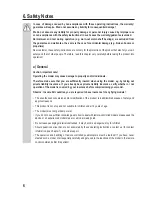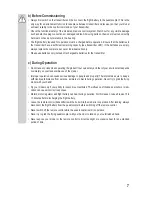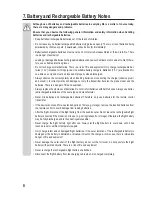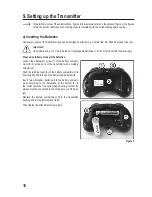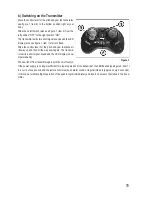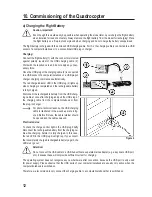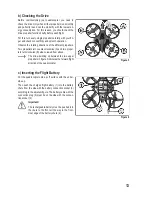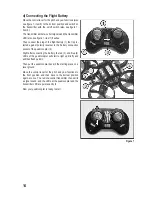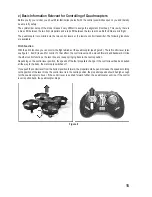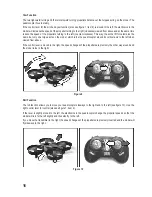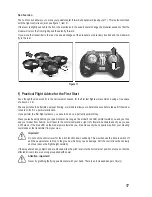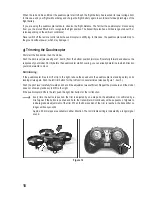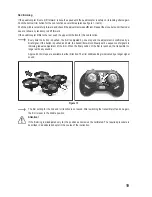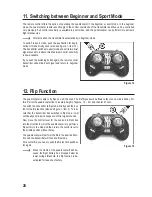
5
5. Product Description
The ready-to-fly quadrocopter has 4 separate motors that drive one propeller each. Concurrent acceleration of all
propellers permits the quadrocopter to lift off of the ground and hover stably in the air at the corresponding propeller
speeds.
For stabilisation in flight, the quadrocopter has elaborate gyro electronics able to recognise uncontrolled movements
of the model and balance them out without delay. For the flight in a specific direction, the electronics in the model
recognise the control impulses of the transmitter and change the speeds of the individual motors accordingly. The
quadrocopter then tilts in the desired direction and the lift thus acts as drive as well. The quadrocopter flies in the
respective direction.
Two propellers on the model turn clockwise and two turn counter-clockwise. By targeted speed change of the two
propeller groups against each other (right-ward rotating propellers turn a little faster and left-ward rotating propellers
turn a little slower or vice versa), it is possible that the quadrocopter can turn (yaw) while maintaining flight height
and position.
In order to better recognise the model alignment in flight, a downwards-pointing blue LED is placed on the front and
a downwards-pointing red LED at the rear. The LEDs concurrently serve as status displays for the quadrocopter.
A central electronics PCB in the middle of the quadrocopter contains all components that are required for stabilising
and steering of the quadrocopter. The 2.4 GHz remote control system included in the delivery allows sensitive steer-
ing of the model.
Beginners have the option of operating the transmitter in Beginner mode. The control reactions of the model are then
clearly reduced (dual rate function). The quadrocopter reacts much more agilely in Sport mode. On demand, the
quadrocopter can even fly somersaults (flips) in any direction.
For operation of the transmitter, 2 AA/mignon batteries (e.g. Conrad item no. 652502, order 2x) are required.


